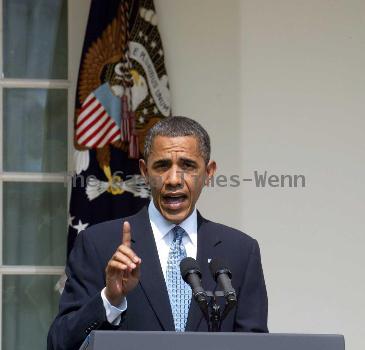As BP prepares to finish off ’static kill,’ questions surround relief well
By Harry R. Weber, APThursday, August 5, 2010
BP prepares to finish up ’static kill’ with cement
NEW ORLEANS — BP planned to pump cement into its blown-out oil well in the Gulf of Mexico on Thursday, hoping to start sealing it for good a day after it forced a slow torrent of heavy mud down the broken wellhead and pushed the crude back to its underground source.
After a series of unsuccessful attempts to stem the flow of oil a mile underwater, the tide appeared to be turning in the months-long battle. The news came as a federal report indicated only about a quarter of the spilled oil remains in the Gulf and is degrading quickly, with the rest contained, cleaned up or otherwise gone.
Even so, Joey Yerkes, a 43-year-old fisherman in Destin, Fla., said he and other boaters, swimmers and scuba divers continue to find oil and tar balls in areas that have been declared clear.
“The end to the leak is good news, but the damage has been done,” Yerkes said.
If the mud plug in the blown-out well is successfully augmented with cement, the next step involves an 18,000-foot relief well that intersects with the old well just above the vast undersea reservoir that had been losing oil freely since the Deepwater Horizon rig exploded off Louisiana on April 20, killing 11 workers.
The hope has been to pump mud and possibly cement down the relief well after its completion later this month, supplementing the work in this week’s so-called “static kill” and stopping up the blown-out well from the bottom.
Despite the progress on the static kill, BP executives and federal officials won’t declare the threat dashed until they use the relief well — though lately they haven’t been able to publicly agree on its role.
Federal officials including spill response commander Thad Allen, a retired Coast Guard admiral, insist that crews will shove mud and cement into the reservoir feeding the well through the 18,000-foot relief well, which should be completed within weeks.
But for reasons unclear, BP officials have in recent days refused to commit to pumping cement down the relief well, saying only that it will be used in some fashion. BP officials have not elaborated on other options, but those could include using the well simply to test whether the reservoir is plugged.
“We have always said that we will move forward with the relief well. That will be the ultimate solution,” BP Senior Vice President Kent Wells said Wednesday afternoon. “We need to take each step at a time. Clearly we need to pump cement. If we do it from the top, we might alter what we do with the relief well, but the relief well is still a part of the solution. The ultimate objective is getting this well permanently sealed.”
The game of semantics has gone back and forth this week, with neither yielding.
Allen clearly said Tuesday that to be safe, the gusher will have to be plugged up from two directions, with the relief well being used for the so-called “bottom kill.”
“There should be no ambiguity about that,” he said then. “I’m the national incident commander and this is how this will be handled.”
The apparent success of the static kill had some along the Gulf curious about why BP waited so long to try it.
“I’m wondering, as smart as the people in the U.S. government are, they couldn’t have done this sooner?” asked 78-year-old Willie Jones, a retiree from Baton Rouge, La., who sat in the shade in Pensacola Beach, Fla., while his wife and granddaughter ventured onto the white — and oil-free — sand.
Whether the well is considered sealed yet or not, there’s still oil in the Gulf or on its shores — nearly 53 million gallons of it, according to the report released Wednesday by the Interior Department and the National Oceanic and Atmospheric Administration. That’s still nearly five times the size of the Exxon Valdez spill, which wreaked environmental havoc in Alaska in 1989.
But almost three-quarters of the nearly 207 million gallons of oil that leaked overall has been collected at the well by a temporary containment cap, been cleaned up or chemically dispersed, or naturally deteriorated, evaporated or dissolved, the report said.
The remaining oil, much of it below the surface, remains a threat to sea life and Gulf Coast marshes, NOAA Administrator Jane Lubchenco said. But the spill no longer threatens the Florida Keys or the East Coast, the report said.
President Barack Obama, while noting that people’s lives “have been turned upside down,” declared that the operation was “finally close to coming to an end.”
An experimental cap has stopped the oil from flowing for the past three weeks, but it was not a permanent solution.
The static kill — also known as bullheading — probably would not have worked without that cap in place. It involved slowly pumping the mud from a ship down lines running to the top of the ruptured well a mile below. A similar effort failed in May when the mud couldn’t overcome the flow of oil.
Contributing to this report were Associated Press writers Jennifer Kay in Pensacola Beach, Fla., Mary Foster in Grand Isle, Tamara Lush in Tampa, Fla., Annie Greenberg in Miami, and Jay Reeves in Birmingham, Ala.
Tags: Accidents, Barack Obama, Coastlines And Beaches, Environmental Concerns, Florida, Louisiana, New Orleans, North America, Pensacola, United States

